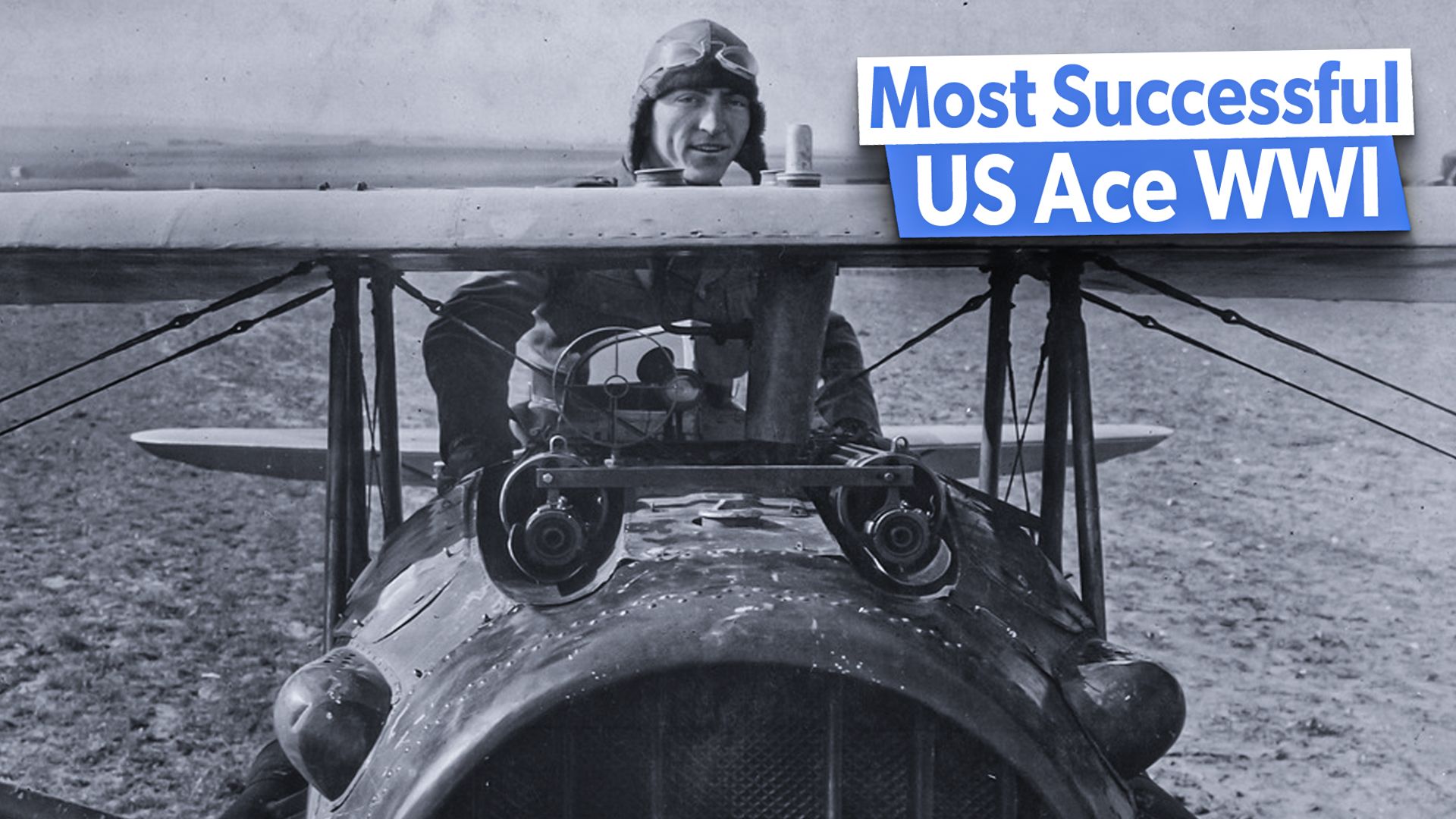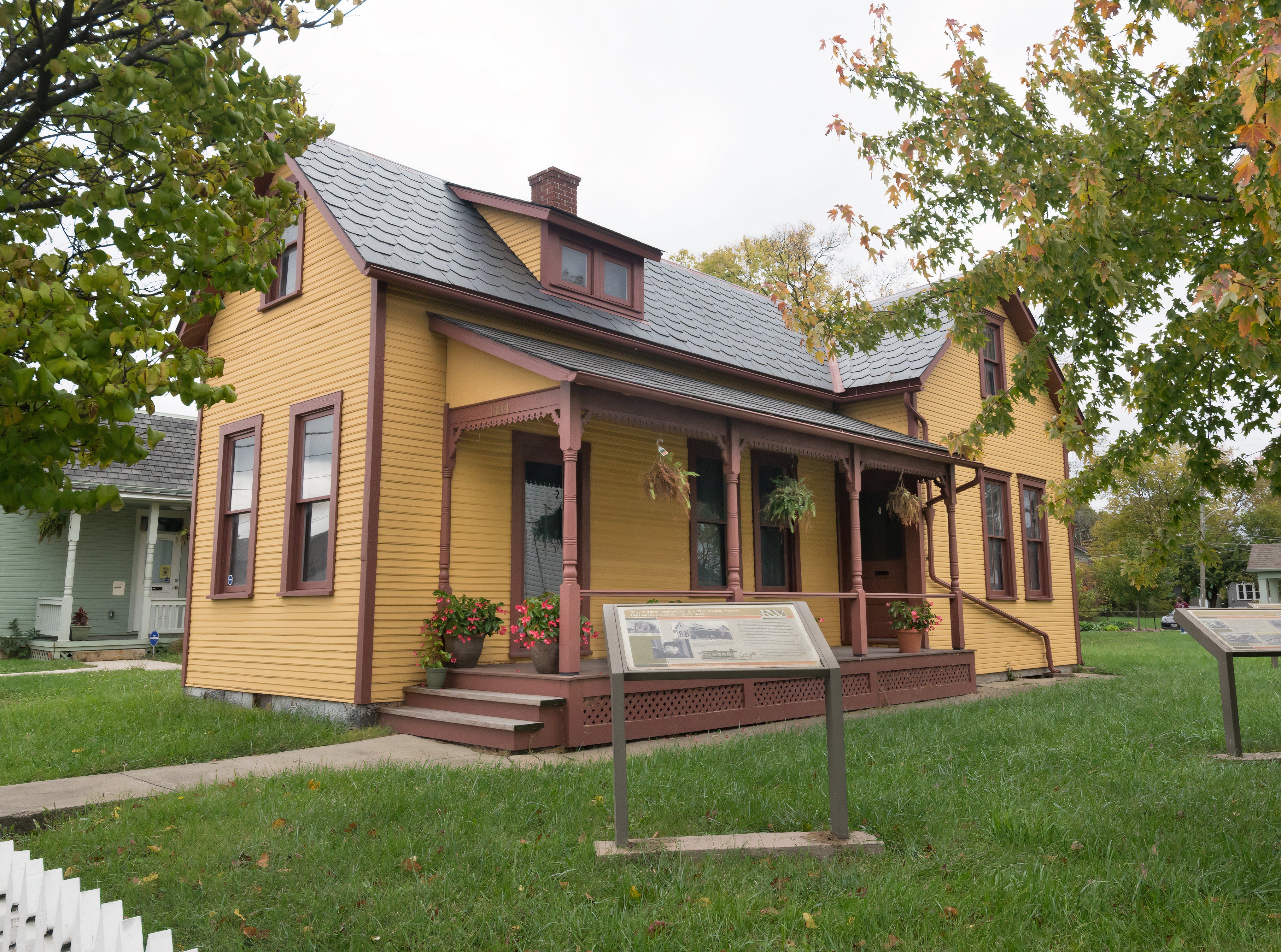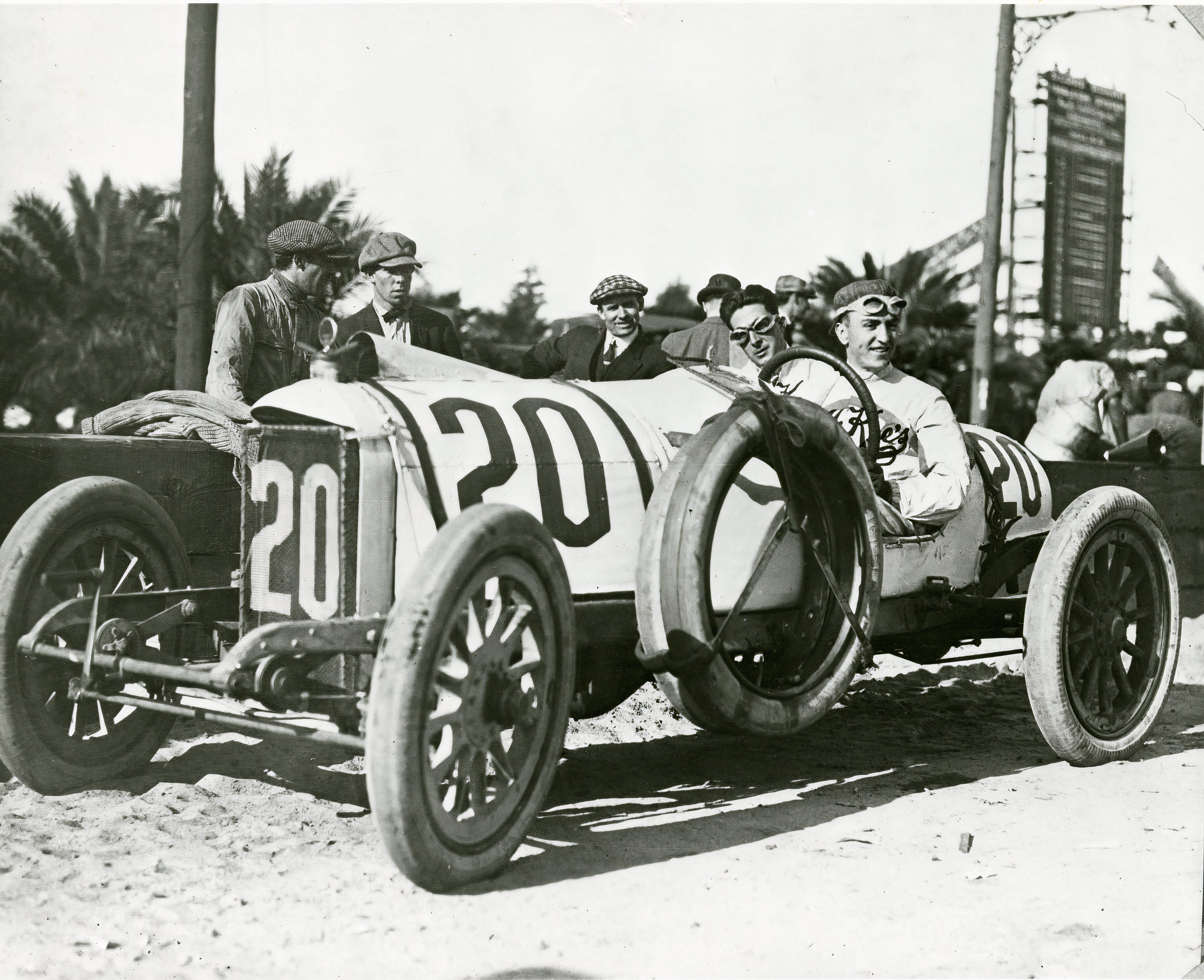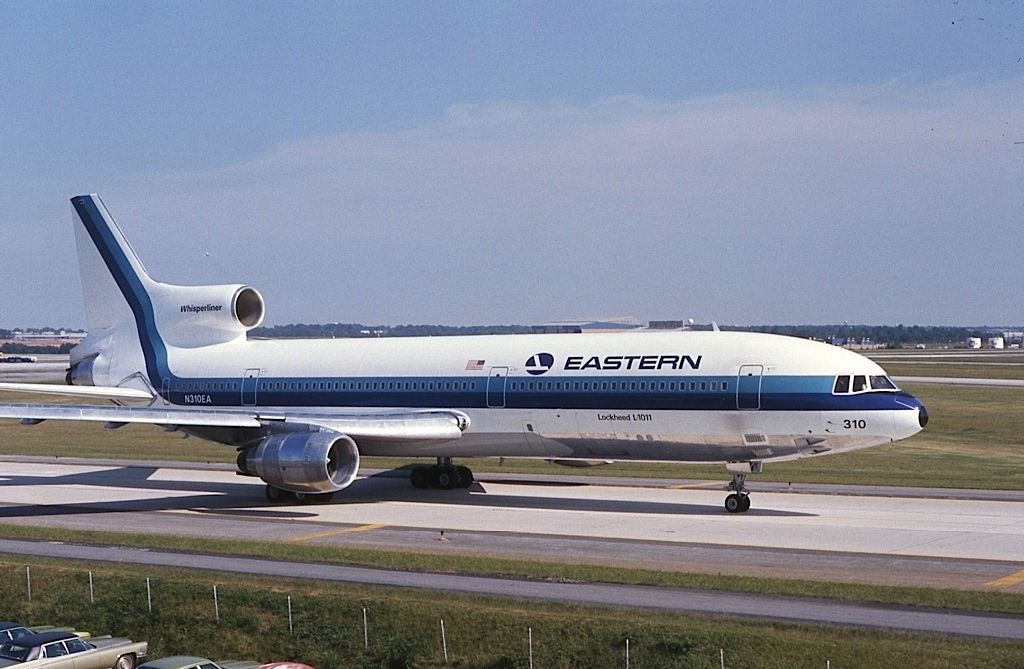While the Germans had Manfred von Richthofen (Red Baron) and the French and British had Georges Guynemer and Albert Ball, Edward Vernon Rickenbacker was the most successful American pilot during WWI. French newspapers first used the term “flying ace” to describe Adolphe Célestin Pégoud after he scored seven kills during aerial combat. Sadly, Pégoud’s fame was short-lived, as he was shot down and killed by German flier Unteroffizier Otto Kandulsk on August 13, 1915.
The son of German-speaking Swiss immigrant Edward Vernon, Rickenbacker was born in Columbus, Ohio, on October 8, 1890. As the third of eight children, Rickenbacker worked before and after school and helped his parents tend the garden, where they grew potatoes, cabbages, and turnips. Following his father’s death on August 26, 1904, Rickenbacker dropped out of school and lied about his age so that he could work to help support the family.
Rickenbacker became interested in racing cars
In 1905, while working for the Oscar Lear Automobile Company, Rickenbacker took an engineering course and was mentored by the company’s Chief Engineer, Lee Frayer. In 1906, while competing at the Vanderbilt Cup race in Long Island, New York, Frayer took Rickenbacker along as his riding mechanic. Unfortunately, after completing two practice runs of the circuit, Frayer’s car overheated, and he failed to compete in the qualifying lap.
Back in Ohio, Rickenbacker was keen on automobile racing and followed Frayer, getting a job as a chief testing engineer at the Columbus Buggy Company. Rickenbacker’s confidence and hard work impressed company owner Harvey S. Firestone, who sent Rickenbacker on special assignments, including troubleshooting in Atlantic City and working as a demonstrator at the 1909 Chicago Automobile Show.
Some of the company engines designed by Frayer tended to overheat, which led Firestone to send the 18-year-old to Texas to solve the problem, which Rickenbacker did. By the spring of 1910, Rickenbacker had climbed through the ranks to become Firestone-Columbus automobiles’ sales, distribution, and maintenance manager in the company’s Omaha, Nebraska office.
Rickenbacker became a successful dirt track racer
Rickenbacker got a stint as a dirt track driver while looking to promote the company’s car in a 25-mile race in Red Oak, Iowa. Sadly, Rickenbacker crashed the vehicle into an outer fence but later continued racing, winning most of the dirt track races he entered. Following his success as a dirt track racer, Frayer invited Rickenbacker to be his relief driver at the Indianapolis 500. Halfway through the race, Rickenbacker replaced Frayer behind the wheel and went on to finish 13th.
In 1912, the American Automobile Association (AAA) was unhappy with the way race car drivers flouted safety regulations and barred Rickenbacker from racing for 12 months. Now unable to race, Rickenbacker got the job of developing a car for Duesenberg’s chief investor, Edward R. Mason, the owner of the Maytag washing machine company.
Photo: USAF
When Rickenbacker could race again, he soon became a household name, earning the nickname “Fast Eddie.” Wanting to get Rickenbacker to race for them, top French automobile maker Peugeot lured Rickenbacker away from Duesenberg. Following a spell of bad finishes, Rickenbacker left Peugeot to join the new Presto-Lite team founded by Indianapolis Speedway owner Carl Fisher.
Rickenbacker went to England to work for Sunbeam
By the end of the 1915-1916 race season, Rickenbacker had become one of the most famous race car drivers in America, earning upwards of $40,000 a year. Impressed with the young American driver, British carmaker Sunbeam convinced Rickenbacker to sign for them, and by the time he arrived in Liverpool, the Los Angeles Times had written a story claiming he was the son of a Prussian nobleman and his name was “Baron Rickenbacker,”
At the time, Great Britain had been at war with Germany for two years, and fearing that Rickenbacker could be a German spy, he was arrested by two plainclothed officers from Scotland Yard. After questioning, Rickenbacker was released and went to work at Sunbeams factory in Wolverhampton.
During his time in England, Rickenbacker watched Royal Flying Corp aircraft training and began to consider becoming a pilot if the United States entered the war. Before going to England, Rickenbacker had a chance encounter with Major Townsend F. Dodd, who would later become General John J. Pershing’s aviation officer.
The United States entered WWI
After three years of being on the sidelines, on April 6, 1917, the United States declared war on Germany and sent troops to France. Because they understood speed and were mechanics, Rickenbacker had the idea of creating an aviation squadron comprised of race car drivers. Rickenbacker’s idea was brushed aside in Washington, yet a week before he was due to compete at a race in Cincinnati, he decided to sail to England, then go to France, and enlist in the Army.
While in France, he became Major Dodd’s driver and used his friendship with Dodd to get a job as a mechanic at an airfield and train to be a fighter pilot. After five weeks of training and 25 hours of flights at the French flight school outside Toul, he went to work at an American aerodrome in Issoudun. When he was not working, Rickenbacker continued his flight training and, after passing gunnery school, joined the 1st Operations Group as a pilot.
Rickenbacker gets his first kill of the war
Rickenbacker’s first sortie on April 13, 1918, nearly ended in disaster after he and fellow pilot Reed Chambers got lost in thick fog. Two weeks later, on April 29, 1918, Rickenbacker scored his first kill. A month later, he recorded his fifth kill and earned the distinction of being an ace. Not long after, Rickenbacker fell ill and spent three months recuperating at a hospital in Paris.
By the time of the St. Mihiel offensive in September 1918, Rickenbacker’s squadron had replaced their French Nieuport airplanes with the more powerful Spad XIII. Rickenbacker found that the Spad was a better fit for his attack style and, after his sixth kill, was made the commander of the 94th squadron. To underscore the fact that he was just like the rest of the men and would never ask them to do anything that he wouldn’t, Rickenbacker continued to shoot down German planes, earning him the prestigious Medal of Honor.
In the final six weeks of the war, Rickenbacker shot down 15 aircraft and was promoted to the rank of Captain. When the war ended on November 11, 1918, Rickenbacker had shot down 26 enemy aircraft, a record for an American aviator that stood until Richard Bong was credited with shooting down 40 Japanese aircraft during WWII.
Rickenbacker returned to America as a war hero
Returning to America as a war hero, Rickenbacker sold Liberty Bonds for the Army until his enlistment ended in 1919. He then took up an offer from millionaire Byron F. Everitt to start a new company, the Rickenbacker Motor Company (RMC). While the car company proved successful, Rickenbacker was consumed with all things aviation, and together with his wartime comrade Reed Chambers, he formed a company called “Florida Airways.”
Rickenbacker’s first foray into the airline business failed, but he still had money, and after raising additional capital, he was able to purchase the Indianapolis Motor Speedway from Carl Fisher. When the United States entered WWII in 1941, Rickenbacker closed the racetrack for the duration of the war and then sold the speedway to Anton Hulman Jr. following the Japanese surrender in 1945.
Rickenbacker buys Eastern Air Lines
Rickenbacker’s next move was to work for General Motors in Detroit and, while there, convince the carmaker to buy North American Aviation, the parent company of Eastern Air Transport, Curtiss-Wright Corporation, and Trans World Airlines. In early 1935, after learning that GM wanted to sell Eastern to John D. Hertz, Rickenbacker met with the company’s president, Alfred P. Sloan, and convinced him to sell the airline to him for $3.5 million.
For decades, Eastern Air Lines continued to grow, but following a decline in the late 1950s, Rickenbacker was removed from his position as CEO and, in December 1963, at the age of 73, resigned his position as chairman of the board. When Rickenbacker died on July 23, 1973, he was the last living Medal of Honor recipient from the United States Army Air Service.





